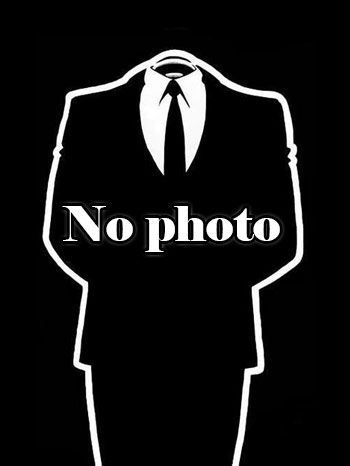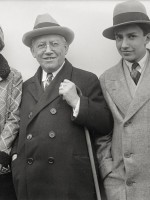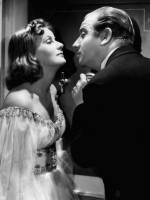Karl Freund is a Actor, Director, Author, Producer, Co-Director, Director of Photography and Cinematography Allemand born on 16 january 1890 at Bohemia (Republique tcheque)

Karl W. Freund, A.S.C. (January 16, 1890-May 3, 1969(1969-05-03) (aged 79)) was a cinematographer and film director best known most noted for photographing Metropolis (1927), Dracula (1931), and television's I Love Lucy (1951-1957).
Karl Freund naît le 16 janvier 1890 à Köninghof (aujourd'hui Dvůr Králové nad Labem, en République tchèque) dans une famille juive. En 1901, il s'installe à Berlin avec ses parents Julius Freund et Marie (née Hermann). Après avoir obtenu son certificat d'études, il entre en apprentissage dans une usine de tampons. En 1906, il devient projectionniste pour l'Alfred Duskes Kinematographen, le principal fabricant allemand de matériel pour le cinématographe. C'est à cette époque qu'il travaille à ses premiers courts métrages, considérés aujourd'hui comme perdus. En 1908, il intègre l'équipe de cameramen d'actualités des frères Pathé, tout en travaillant comme assistant technique pour Oskar Messter, l'un des premiers producteurs allemands.
Jusqu'en 1915, Freund s'établit une solide réputation de technicien qui l'amène à travailler pour les nombreux studios indépendants qui fleurissent alors, aussi bien en Allemagne et en Yougoslavie qu'en Autriche. Cette année-là, il s'engage dans l'armée autrichienne mais se trouve réformé au bout de trois mois pour cause de surpoids. Dès l'année suivante, il travaille sur une série de films interprétés par la star de l'époque, Henny Porten. En 1919, il fonde sa propre société, la Karl-Freund-Film GmbH, et deux ans plus tard il réalise son premier film, Der Tote Gast.
Freund s'impose comme le chef opérateur vedette de la Decla-Bioscop, Gloria et Oswald-Film, et collabore étroitement avec Ernst Lubitsch, Fritz Lang, Ludwig Berger, Paul Wegener (il est le chef opérateur du Golem en 1920), ou Carl Theodor Dreyer à l'UFA. Karl Freund, le réalisateur Friedrich Wilhelm Murnau, Walter Röhrig et le scénariste Carl Mayer constituent alors l'équipe artistique la plus importante du cinéma muet allemand, représentante d'un niveau d'invention et d'une liberté technique seulement égalés en France, par Abel Gance dans son Napoléon. En 1924, Freund développe sa Entfesselte Kamera (« Caméra déchaînée ») révolutionnaire, une sorte de caméra légère embarquée (sur harnais ou support mobile) permettant les mouvements les plus variés : il inaugure cette technique sur Le Dernier des hommes (Murnau, 1924), modèle de mise en scène pour toute une génération de cinéastes à venir (Jean Renoir, Max Ophüls...). En 1928 il participe à la création du Volksverband für Filmkunst, sorte de cinéma progressiste, avec Heinrich Mann, Georg Wilhelm Pabst et Erwin Piscator, dont les expériences berlinoises sont à l'origine de cette défense du film allemand d'art et d'essai.
Arrivée à Hollywood
Objet d'une reconnaissance internationale, Freund se penche sur d'autres innovations telles que l'enregistrement sonore sur support magnétique, le son optique, les effets spéciaux avec miniatures... Après avoir bouclé le tournage dantesque de Metropolis, il expérimente des méthodes de tournage en couleurs qui attirent l'attention de la Technicolor Corporation aux États-Unis. Il poursuit quelque temps ses recherches à New York avant de rejoindre Hollywood en 1929, où l'attend avec impatience Carl Laemmle, grand patron des studios Universal.
On lui confie aussitôt la direction de la mémorable scène finale d'À l'Ouest, rien de nouveau. On le retrouve, toujours en tant que directeur de la photographie, sur des classiques des années 1930-40, dont Dracula, cependant John Brosnan dans The Horror People pense que le film Dracula ne laissa pas assez de liberté à Freund pour qu'il puisse ajouter sa touche personnelle au film, tandis que le film qu'il tourna l'année suivante, Double assassinat dans la rue Morgue inspiré de la nouvelle d'Edgar Poe, lui convenait bien mieux, de par son aspect lugubre lié aux ruelles parisiennes.
Parallèlement à sa carrière de technicien, Freund réalisera quelques films entre 1932 et 1935, dont les étonnants La Momie (1932) avec Boris Karloff, et Les Mains d'Orlac (1935) pour la MGM avec un Peter Lorre inquiétant à souhait. Le genre fantastique, particulièrement, permet à Freund de développer son art du contraste, des clairs obscurs issus de l'expressionnisme allemand. Il gagne en 1937 avec Visages d'Orient, l'Oscar de la meilleure photographie, et est nommé en 1940 pour Orgueil et Préjugés de Robert Z. Leonard. Il travailla également pour la Columbia, réalisant d'ailleurs un doublé assez spécifique : il fut nommé aux oscars de la meilleure photographie en couleur et en noir et blanc pour les films The Chocolate Soldier (1941) et Les Oubliés (1941) . Il migra finalement pour la Warner Bros. en 1947, où il travailla notamment sur Key Largo (1948) de John Huston.
Fin de carrière et travail pour la télévision
Toujours à l'affût d'innovations techniques, il met au point, dès la fin de la Seconde Guerre mondiale, de nouveaux appareils permettant de mesurer la densité des couleurs ainsi que des caméras de télévision plus performantes, et il créa en 1944 la Photo Research Corporation, entreprise de fabrication de caméras, toujours en fonction. La télévision va d'ailleurs devenir son ultime refuge et terrain d'expérimentation, d'abord avec Our Miss Brooks puis en 1950 la star Lucille Ball l'engage pour superviser la photographie de son show populaire I Love Lucy ; il invente pour l'occasion le système multi caméras, impliquant trois caméras tournant simultanément. Selon John Brosnan, cette « chute » fut difficile pour un homme ayant travaillé avec de grands réalisateurs comme Murnau, et le rendit amer, ce qui lui fit tenir des propos aigris à l'égard d'Hollywood, qu'il considérait alors comme « de la pornographie légalisée ».
En 1959, il se retire dans sa ferme de la vallée de San Fernando, poursuivant ses recherches, participant à des conférences internationales et autres séminaires hollywoodiens. Il meurt le 3 mai 1969 à Santa Monica.
 (1948)
(1948)
(Director of Photography)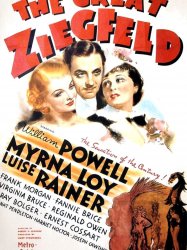 (1936)
(1936)
(Director of Photography) (1937)
(1937)
(Director of Photography)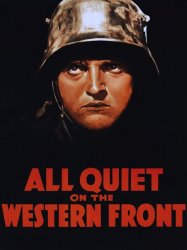 (1930)
(1930)
(Director of Photography) (1941)
(1941)
(Director of Photography)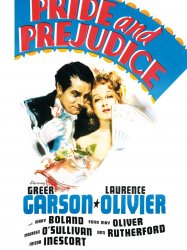 (1940)
(1940)
(Director of Photography)
Source : Wikidata
Karl Freund

- Infos
- Photos
- Best films
- Family
- Characters
- Awards
Birth name Karl W. Freund
Nationality German
Birth 16 january 1890 at Bohemia (Republique tcheque)
Death 3 may 1969 (at 79 years) at Santa Monica (USA)
Awards Academy Award for Best Cinematography
Nationality German
Birth 16 january 1890 at Bohemia (Republique tcheque)
Death 3 may 1969 (at 79 years) at Santa Monica (USA)
Awards Academy Award for Best Cinematography
Karl W. Freund, A.S.C. (January 16, 1890-May 3, 1969(1969-05-03) (aged 79)) was a cinematographer and film director best known most noted for photographing Metropolis (1927), Dracula (1931), and television's I Love Lucy (1951-1957).
Biography
Débuts et succèsKarl Freund naît le 16 janvier 1890 à Köninghof (aujourd'hui Dvůr Králové nad Labem, en République tchèque) dans une famille juive. En 1901, il s'installe à Berlin avec ses parents Julius Freund et Marie (née Hermann). Après avoir obtenu son certificat d'études, il entre en apprentissage dans une usine de tampons. En 1906, il devient projectionniste pour l'Alfred Duskes Kinematographen, le principal fabricant allemand de matériel pour le cinématographe. C'est à cette époque qu'il travaille à ses premiers courts métrages, considérés aujourd'hui comme perdus. En 1908, il intègre l'équipe de cameramen d'actualités des frères Pathé, tout en travaillant comme assistant technique pour Oskar Messter, l'un des premiers producteurs allemands.
Jusqu'en 1915, Freund s'établit une solide réputation de technicien qui l'amène à travailler pour les nombreux studios indépendants qui fleurissent alors, aussi bien en Allemagne et en Yougoslavie qu'en Autriche. Cette année-là, il s'engage dans l'armée autrichienne mais se trouve réformé au bout de trois mois pour cause de surpoids. Dès l'année suivante, il travaille sur une série de films interprétés par la star de l'époque, Henny Porten. En 1919, il fonde sa propre société, la Karl-Freund-Film GmbH, et deux ans plus tard il réalise son premier film, Der Tote Gast.
Freund s'impose comme le chef opérateur vedette de la Decla-Bioscop, Gloria et Oswald-Film, et collabore étroitement avec Ernst Lubitsch, Fritz Lang, Ludwig Berger, Paul Wegener (il est le chef opérateur du Golem en 1920), ou Carl Theodor Dreyer à l'UFA. Karl Freund, le réalisateur Friedrich Wilhelm Murnau, Walter Röhrig et le scénariste Carl Mayer constituent alors l'équipe artistique la plus importante du cinéma muet allemand, représentante d'un niveau d'invention et d'une liberté technique seulement égalés en France, par Abel Gance dans son Napoléon. En 1924, Freund développe sa Entfesselte Kamera (« Caméra déchaînée ») révolutionnaire, une sorte de caméra légère embarquée (sur harnais ou support mobile) permettant les mouvements les plus variés : il inaugure cette technique sur Le Dernier des hommes (Murnau, 1924), modèle de mise en scène pour toute une génération de cinéastes à venir (Jean Renoir, Max Ophüls...). En 1928 il participe à la création du Volksverband für Filmkunst, sorte de cinéma progressiste, avec Heinrich Mann, Georg Wilhelm Pabst et Erwin Piscator, dont les expériences berlinoises sont à l'origine de cette défense du film allemand d'art et d'essai.
Arrivée à Hollywood
Objet d'une reconnaissance internationale, Freund se penche sur d'autres innovations telles que l'enregistrement sonore sur support magnétique, le son optique, les effets spéciaux avec miniatures... Après avoir bouclé le tournage dantesque de Metropolis, il expérimente des méthodes de tournage en couleurs qui attirent l'attention de la Technicolor Corporation aux États-Unis. Il poursuit quelque temps ses recherches à New York avant de rejoindre Hollywood en 1929, où l'attend avec impatience Carl Laemmle, grand patron des studios Universal.
On lui confie aussitôt la direction de la mémorable scène finale d'À l'Ouest, rien de nouveau. On le retrouve, toujours en tant que directeur de la photographie, sur des classiques des années 1930-40, dont Dracula, cependant John Brosnan dans The Horror People pense que le film Dracula ne laissa pas assez de liberté à Freund pour qu'il puisse ajouter sa touche personnelle au film, tandis que le film qu'il tourna l'année suivante, Double assassinat dans la rue Morgue inspiré de la nouvelle d'Edgar Poe, lui convenait bien mieux, de par son aspect lugubre lié aux ruelles parisiennes.
Parallèlement à sa carrière de technicien, Freund réalisera quelques films entre 1932 et 1935, dont les étonnants La Momie (1932) avec Boris Karloff, et Les Mains d'Orlac (1935) pour la MGM avec un Peter Lorre inquiétant à souhait. Le genre fantastique, particulièrement, permet à Freund de développer son art du contraste, des clairs obscurs issus de l'expressionnisme allemand. Il gagne en 1937 avec Visages d'Orient, l'Oscar de la meilleure photographie, et est nommé en 1940 pour Orgueil et Préjugés de Robert Z. Leonard. Il travailla également pour la Columbia, réalisant d'ailleurs un doublé assez spécifique : il fut nommé aux oscars de la meilleure photographie en couleur et en noir et blanc pour les films The Chocolate Soldier (1941) et Les Oubliés (1941) . Il migra finalement pour la Warner Bros. en 1947, où il travailla notamment sur Key Largo (1948) de John Huston.
Fin de carrière et travail pour la télévision
Toujours à l'affût d'innovations techniques, il met au point, dès la fin de la Seconde Guerre mondiale, de nouveaux appareils permettant de mesurer la densité des couleurs ainsi que des caméras de télévision plus performantes, et il créa en 1944 la Photo Research Corporation, entreprise de fabrication de caméras, toujours en fonction. La télévision va d'ailleurs devenir son ultime refuge et terrain d'expérimentation, d'abord avec Our Miss Brooks puis en 1950 la star Lucille Ball l'engage pour superviser la photographie de son show populaire I Love Lucy ; il invente pour l'occasion le système multi caméras, impliquant trois caméras tournant simultanément. Selon John Brosnan, cette « chute » fut difficile pour un homme ayant travaillé avec de grands réalisateurs comme Murnau, et le rendit amer, ce qui lui fit tenir des propos aigris à l'égard d'Hollywood, qu'il considérait alors comme « de la pornographie légalisée ».
En 1959, il se retire dans sa ferme de la vallée de San Fernando, poursuivant ses recherches, participant à des conférences internationales et autres séminaires hollywoodiens. Il meurt le 3 mai 1969 à Santa Monica.
Best films
 (1948)
(1948)(Director of Photography)
 (1936)
(1936)(Director of Photography)
 (1937)
(1937)(Director of Photography)
 (1930)
(1930)(Director of Photography)
 (1941)
(1941)(Director of Photography)
 (1940)
(1940)(Director of Photography)
Usually with
Filmography of Karl Freund (105 films)
Actor

Michael (1924)
Directed by Carl Theodor Dreyer
Origin German
Genres Drama, Romance
Themes Peinture, Films about sexuality, LGBT-related films, LGBT-related films, LGBT-related film
Actors Benjamin Christensen, Walter Slezak, Nora Gregor, Alexander Murski, Grete Mosheim, Karl Freund
Roles LeBlanc - Art Dealer
Rating70%





A famous painter named Claude Zoret falls in love with one of his models, Michael, and for a time the two live happily as partners. Zoret is considerably older than Michael, and as they age, Michael begins to drift from him, although Zoret is completely blind to this. When a bankrupt countess comes to Zoret to have a portrait made — with the real intent of seducing him and swindling his money — she finds Michael to be more receptive to her advances. At her lead, the two quickly become a couple and she immediately begins using Michael to steal from Zoret. When Zoret discovers what has been going on, he is crushed and his work suffers terribly.
Director
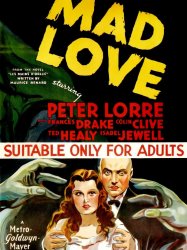
Mad Love (1935)
, 1h8Directed by Karl Freund
Origin USA
Genres Drama, Comedy, Horror, Romance
Themes Films about music and musicians
Actors Peter Lorre, Frances Drake, Colin Clive, Edward Brophy, Ted Healy, Sara Haden
Rating71%





Actress Yvonne Orlac (Frances Drake) rests after her final performance at the 'Théâtre des Horreurs' (styled after the Grand Guignol) in Paris, France. As she listens to her husband Stephen Orlac (Colin Clive) play the piano on the radio, she is greeted by Dr. Gogol (Peter Lorre), who has seen every show featuring Yvonne, and unaware of her marriage, is aghast to learn that she is moving to England with her husband. Gogol leaves the theater heartbroken, buys the wax figure of Yvonne's character, refers to it as Galatea (from the Greek myth), and arranges that it be delivered to his home the following day.
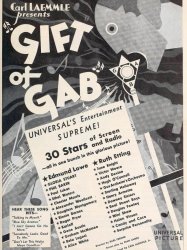
Gift of Gab (1934)
, 1h10Directed by Karl Freund
Origin USA
Genres Comedy, Musical
Themes Musical films
Actors Edmund Lowe, Gloria Stuart, Ruth Etting, Ethel Waters, Alice White, Paul Lukas
Rating49%






The Countess of Monte Cristo (1934)
, 1h18Directed by Karl Freund
Origin USA
Genres Comedy
Actors Fay Wray, Paul Lukas, Reginald Owen, Patsy Kelly, John Sheehan, Carmel Myers
Rating62%






Moonlight and Pretzels (1933)
, 1h23Directed by Karl Freund
Genres Musical
Themes Musical films
Actors Leo Carrillo, Mary Brian, Herbert Rawlinson, Roger Pryor, Roger Pryor, William Frawley
Rating68%






The Mummy (1932)
, 1h13Directed by Karl Freund
Origin USA
Genres Drama, Fantasy, Horror
Themes Films set in Africa, Films based on mythology, Films about religion, Mythologie égyptienne
Actors Boris Karloff, Zita Johann, David Manners, Edward Van Sloan, Noble Johnson, Leonard Mudie
Rating69%





An ancient Egyptian priest called Imhotep (Boris Karloff) is revived when an archaeological expedition in 1921, led by Sir Joseph Whemple (Arthur Byron), finds Imhotep's mummy. Imhotep had been mummified alive for attempting to resurrect his forbidden lover, the princess Ankh-es-en-amon. Whemple's friend, Dr. Muller (Edward Van Sloan) inspects the mummy and exclaims "The viscera were not removed. The usual scar made by the embalmers knife is not there." Sir Joseph Wimple responds, "I guessed as much." Despite Muller's warning, Sir Joseph's assistant Ralph Norton (Bramwell Fletcher) reads aloud an ancient life-giving scroll – the Scroll of Thoth. Imhotep escapes from the archaeologists, taking the Scroll of Thoth, and prowls Cairo seeking the modern reincarnation of Ankh-es-en-amon.

Dracula (1931)
, 1h15Directed by Tod Browning, Karl Freund
Origin USA
Genres Drama, Fantastic, Fantasy, Horror
Themes Films about magic and magicians, Dracula films, Vampires in film, Films based on plays
Actors Bela Lugosi, Helen Chandler, David Manners, Dwight Frye, Edward Van Sloan, Carla Laemmle
Rating73%





Renfield is a solicitor traveling to Count Dracula's castle in Transylvania on a business matter. The people in the local village fear that vampires inhabit the castle and warn Renfield not to go there. Renfield refuses to stay at the inn and asks his carriage driver to take him to the Borgo Pass. Renfield is driven to the castle by Dracula's coach, with Dracula disguised as the driver. En route, Renfield sticks his head out the window to ask the driver to slow down, but sees the driver has disappeared; a bat leads the horses.
Scriptwriter
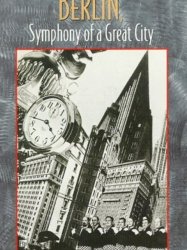 , 1h5
, 1h5Directed by Walter Ruttmann
Origin German
Genres Documentary, Historical, Animation
Themes Documentary films about cities
Roles Author
Rating75%





Berlin: Symphony of a Metropolis is largely an avant-garde film, and does not have a story or a plot. However, the events of the film are arranged to simulate the passage of a single day (simulated from an assemblage of film shot over the period of one year). Shots and scenes are cut together based on relationships of image, motion, point of view, and thematic content. At times, a sort of non-narrative commentary can be implied, as in edits that juxtapose workers entering a factory with cattle being beaten and driven into a corral.
Producer
 , 1h5
, 1h5Directed by Walter Ruttmann
Origin German
Genres Documentary, Historical, Animation
Themes Documentary films about cities
Roles Producer
Rating75%





Berlin: Symphony of a Metropolis is largely an avant-garde film, and does not have a story or a plot. However, the events of the film are arranged to simulate the passage of a single day (simulated from an assemblage of film shot over the period of one year). Shots and scenes are cut together based on relationships of image, motion, point of view, and thematic content. At times, a sort of non-narrative commentary can be implied, as in edits that juxtapose workers entering a factory with cattle being beaten and driven into a corral.

Madame Wants No Children (1926)
, 1h38Directed by Karl Hartl, Alexander Korda
Origin German
Genres Drama
Actors María Corda, Harry Liedtke, Trude Hesterberg, Camilla von Hollay, Camilla Horn, Marlene Dietrich
Roles Producer
Rating58%






The Mill at Sanssouci (1926)
Directed by Friedrich Zelnik
Genres Drama
Themes Political films, Films about royalty
Actors Otto Gebühr, Jakob Tiedtke, Anita Dorris, Georg Alexander, Olga Tschechowa, Carl Goetz
Roles Executive producer
 , 1h26
, 1h26Directed by Herbert Selpin, Berthold Viertel
Origin German
Genres Drama, Crime
Actors Walter Franck, Werner Fuetterer, Oskar Homolka, Maly Delschaft, Renate Brausewetter, Karl Etlinger
Roles Production Supervisor
Rating27%





Anna vient de faire sa première semaine de travail de sa vie et a son premier salaire : un billet de dix marks avec le numéro de registre K 13513. Andreas, son compagnon, le marque d'une croix et Anna le confie à sa mère qui le cache dans une bible. Robert, le frère d'Anna, vole le billet et achète avec ce billet un couteau avec lequel il commet un meurtre. Par la suite, la mère tente de se suicider et Anna perd son emploi. Le mobilier est menacé d'être saisi. Elle parle de ses difficultés financières au riche directeur Haniel qui, sous de bonnes actions, a des motifs inavouables. Quand Anna découvre les véritables intentions de Haniel, elle prend la fuite avec Andreas qui vend sa bicyclette pour racheter les meubles d'Anna. Lors de la vente de la bicyclette, il récupère le billet de dix marks d'Anna. C'est un signe qu'ils doivent rester ensemble.
Director

Dracula (1931)
, 1h15Directed by Tod Browning, Karl Freund
Origin USA
Genres Drama, Fantastic, Fantasy, Horror
Themes Films about magic and magicians, Dracula films, Vampires in film, Films based on plays
Actors Bela Lugosi, Helen Chandler, David Manners, Dwight Frye, Edward Van Sloan, Carla Laemmle
Roles Co-Director
Rating73%





Renfield is a solicitor traveling to Count Dracula's castle in Transylvania on a business matter. The people in the local village fear that vampires inhabit the castle and warn Renfield not to go there. Renfield refuses to stay at the inn and asks his carriage driver to take him to the Borgo Pass. Renfield is driven to the castle by Dracula's coach, with Dracula disguised as the driver. En route, Renfield sticks his head out the window to ask the driver to slow down, but sees the driver has disappeared; a bat leads the horses.
Cameraman

I Love Lucy: The Movie (1953)
, 1h21Directed by Edward Sedgwick, Marc Daniels
Origin USA
Genres Comedy
Actors Lucille Ball, Desi Arnaz, Vivian Vance, William Frawley, Ann Doran, Mary Wickes
Roles Director of Photography
Rating82%





The film plays out with three first-season episodes edited together into a single story: "The Benefit", "Breaking the Lease", and "The Ballet", with new footage included between episodes to help transition the episodes into one coherent storyline. As the series routinely took the format of filming scenes in chronological order, this adds to the "show within a show within a show" format of the film, as viewers watch the cast perform the episodes live. The film itself ends with a "curtain call", as the cast comes out and Arnaz thanks the audience for their support.

Bright Leaf (1950)
, 1h50Directed by Michael Curtiz
Origin USA
Genres Drama, Romance
Actors Gary Cooper, Lauren Bacall, Patricia Neal, Jack Carson, Donald Crisp, Gladys George
Roles Director of Photography
Rating66%





In 1894, poor but arrogant Brant Royle (Gary Cooper) returns to his hometown of Kingsmont, North Carolina, to settle his recently deceased uncle's estate. Years before, he had been driven out by powerful tobacco plantation owner Major Singleton (Donald Crisp) for daring to fall in love with Singleton's daughter Margaret (Patricia Neal).
 Connection
Connection

